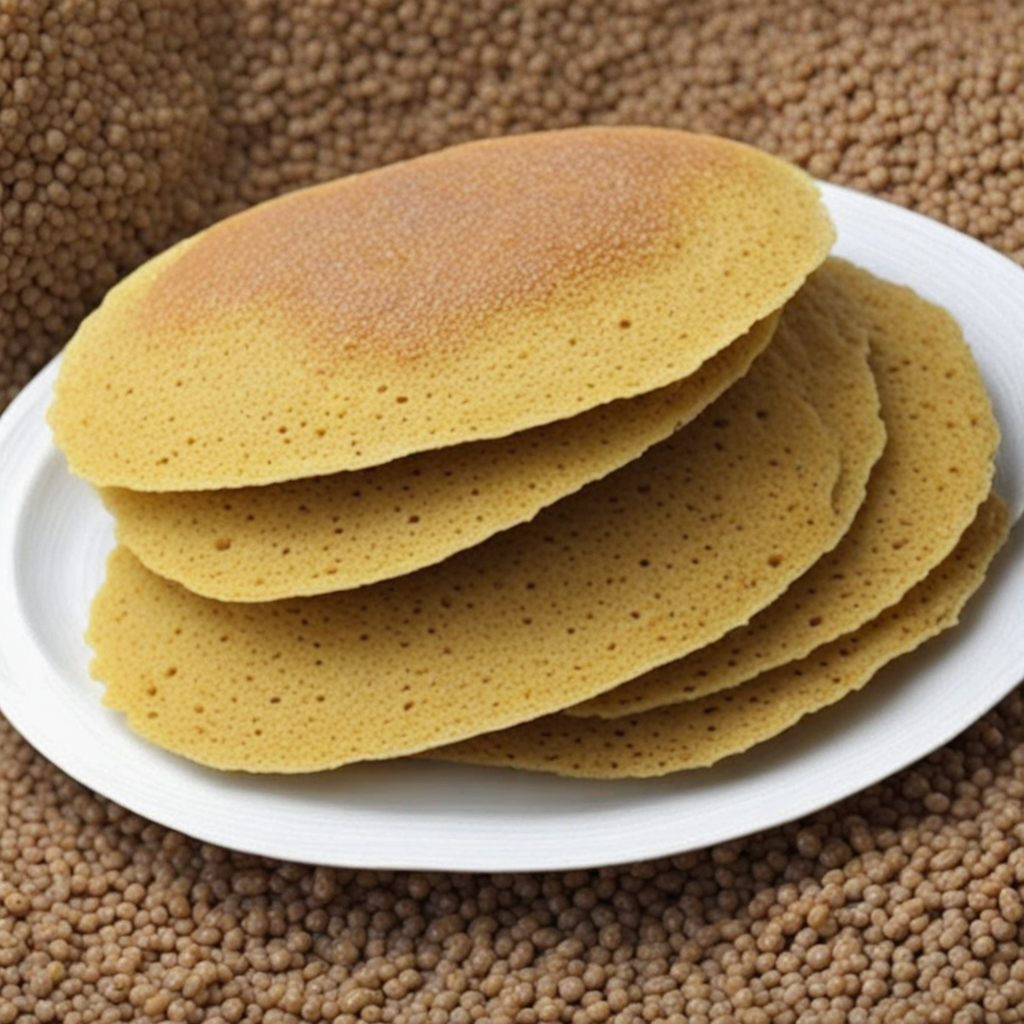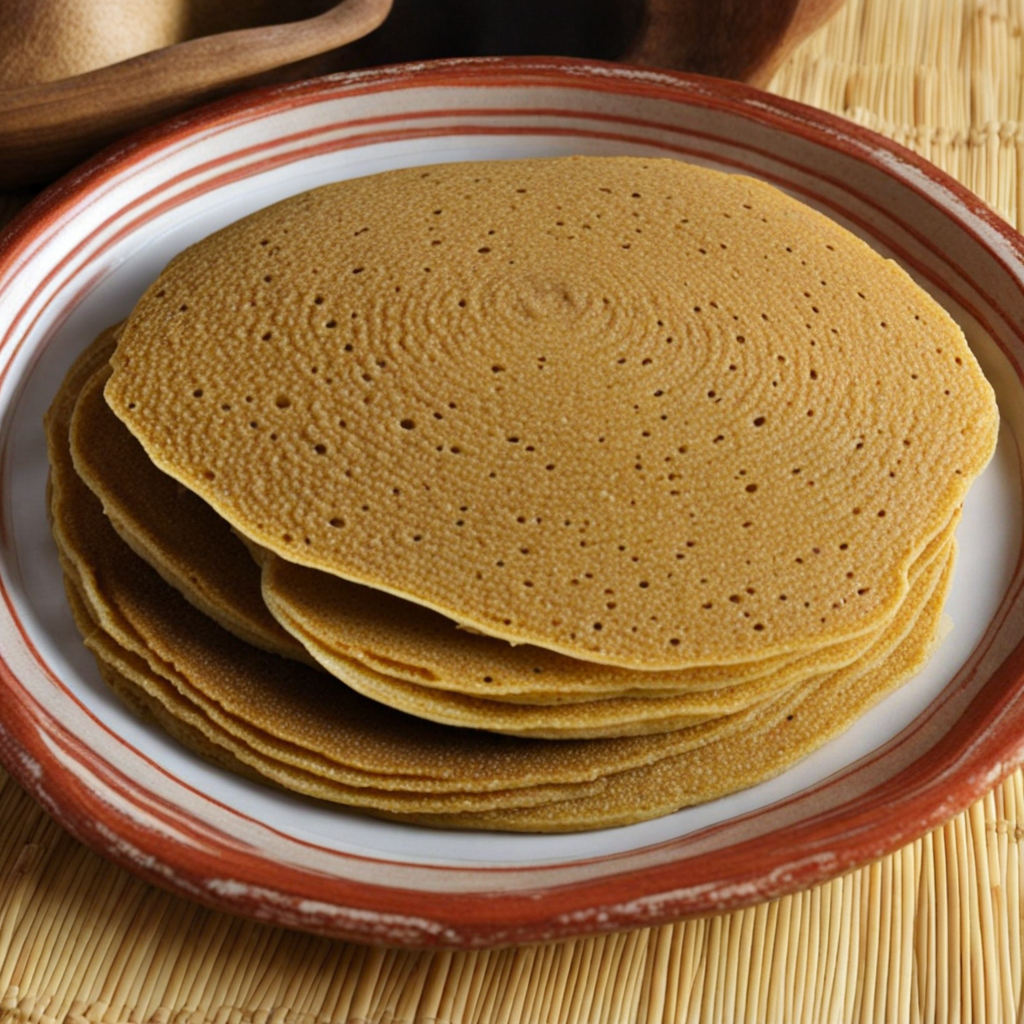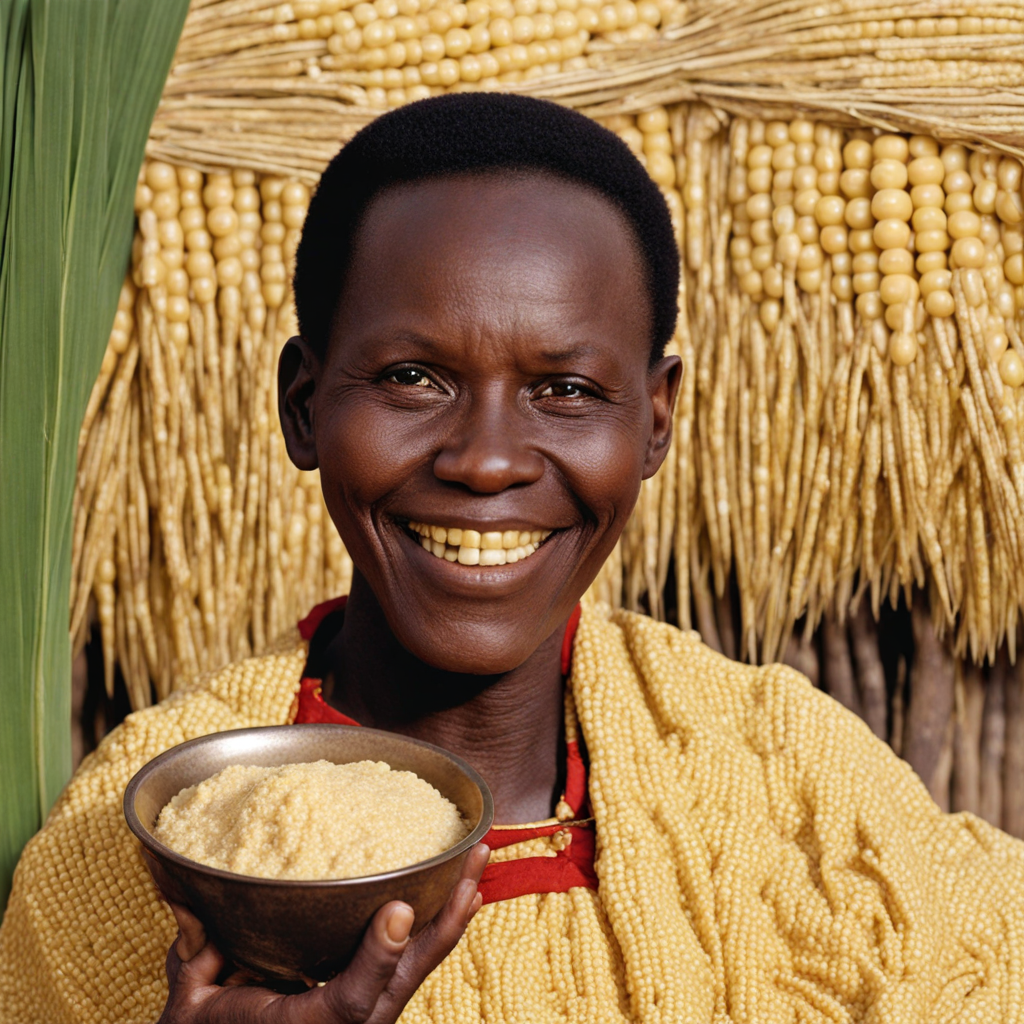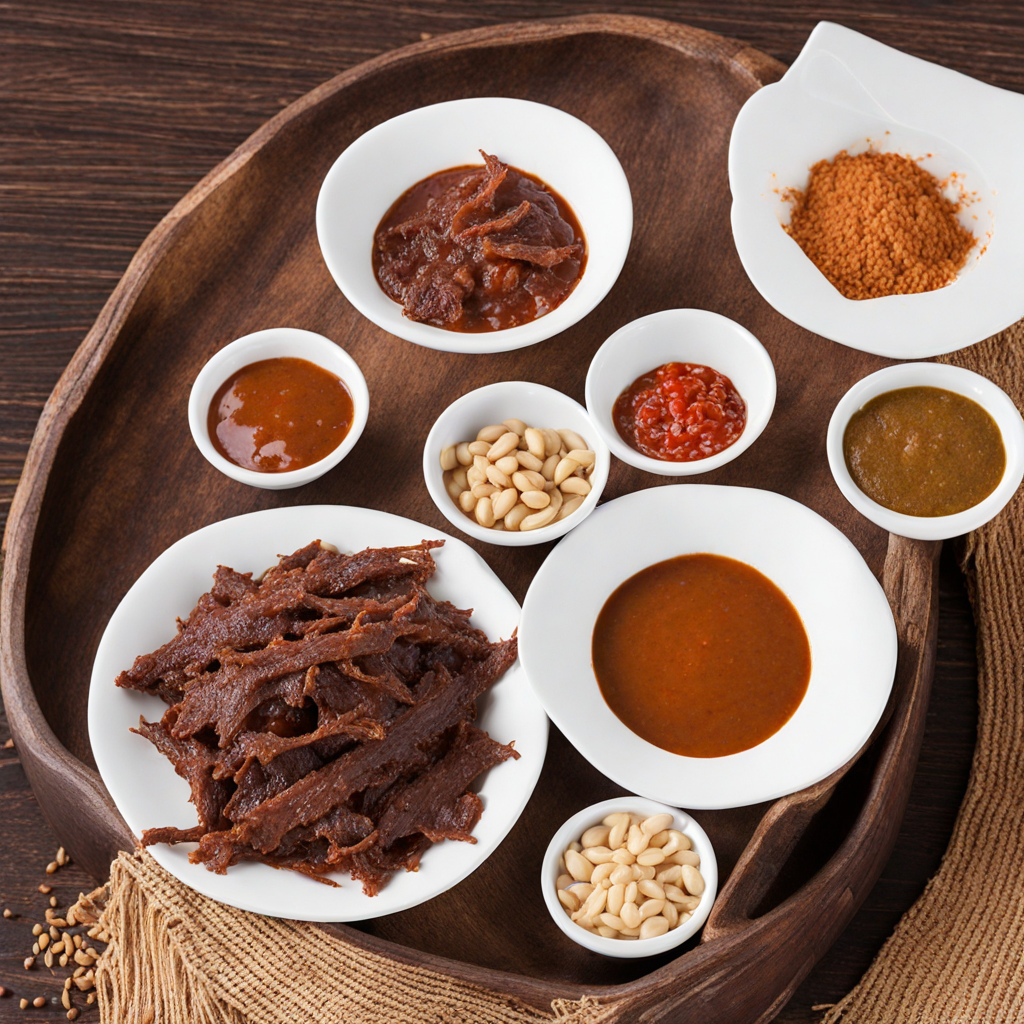Lahoh
Lahoh is a delightful and unique dish from Mali, often enjoyed as a breakfast staple or snack throughout the day. This traditional Malian pancake is known for its spongy texture and slightly tangy flavor, resulting from the fermentation of the batter made from millet or wheat flour. The cooking process involves pouring the batter onto a hot griddle, where it bubbles and forms small holes on the surface, giving it a distinctive appearance reminiscent of an airy sponge. The delightful aroma that wafts from the griddle as Lahoh cooks is enticing and hints at the satisfying taste that awaits. Typically served warm, Lahoh can be enjoyed plain or paired with a variety of accompaniments. It is often drizzled with honey or syrup for a touch of sweetness, while some enjoy it with spicy sauces or stews for a savory experience. The versatility of Lahoh allows it to adapt to different palates, making it a favorite among both locals and newcomers. Its soft, pliable nature makes it an ideal vessel for scooping up flavorful dips or mopping up rich sauces, enhancing the overall dining experience. What sets Lahoh apart from other pancakes is its rich cultural significance in Malian cuisine. It embodies the essence of communal eating and is often shared among family and friends, fostering connections and creating memorable moments. As you savor each bite of Lahoh, you’re not just indulging in a delicious dish but also partaking in a culinary tradition that has been cherished for generations. With its unique texture and ability to complement a wide array of flavors, Lahoh invites you to explore the vibrant and diverse tastes of Mali.
How It Became This Dish
The History of Lahoh: Mali's Cultural Culinary Treasure Origin and Early Beginnings Lahoh, a traditional flatbread originating from the Sahel region, particularly popular in Mali, is deeply woven into the fabric of the local culture and daily life. Its roots can be traced back to the ancient trade routes that crisscrossed the region, bringing together diverse peoples and cultures. The earliest forms of Lahoh were likely influenced by the culinary practices of the Berber and Tuareg peoples, who inhabited the arid landscapes of North Africa. The name "Lahoh" itself is derived from the Arabic word "lḥḥ," meaning to rise or to swell, which aptly describes the way the batter puffs up during cooking. Traditionally made from a simple mixture of flour, water, yeast, and sometimes a pinch of salt, Lahoh is a reflection of the resourcefulness of the peoples of Mali. The ingredients are often locally sourced, which highlights the agrarian lifestyle of many communities. While wheat flour is commonly used, variations may include millet or sorghum flour, showcasing the adaptation to available resources. Cultural Significance In Mali, Lahoh is more than just food; it is a symbol of hospitality and community. It is often served during significant occasions such as weddings, religious celebrations, and communal gatherings. The preparation and sharing of Lahoh bring people together, fostering bonds among family and friends. It is often enjoyed with a variety of accompaniments, including honey, sugar, or a savory sauce, making it versatile enough to cater to different palates. The act of making Lahoh is often a communal affair, with women gathering to prepare the batter and cook the bread over a large fire. This communal cooking not only strengthens social ties but also preserves the traditional methods passed down through generations. In many households, the preparation of Lahoh is accompanied by songs and storytelling, further embedding it within the cultural narrative of the community. Lahoh has also evolved into a street food staple in urban areas, where vendors serve it hot and fresh, often accompanied by tea or coffee. Its easy preparation and delicious flavor make it a popular choice among locals and visitors alike, contributing to the vibrant culinary scene in cities such as Bamako, the capital of Mali. Development Over Time As Mali has experienced historical changes, including shifts in political power, colonial influences, and globalization, so too has Lahoh developed. During the colonial period, French influences began to permeate Malian cuisine, introducing new ingredients and cooking techniques. While Lahoh remained fundamentally the same, the availability of new ingredients allowed for experimentation and adaptation, leading to variations in flavor and presentation. In contemporary Mali, Lahoh has seen a resurgence in popularity, particularly as culinary tourism has gained traction. Visitors to Mali are often eager to experience authentic local cuisine, and Lahoh stands out as a must-try dish. Culinary workshops and cooking classes that focus on traditional Malian foods frequently feature Lahoh as a highlight, allowing participants to engage directly with the culture and history behind the dish. The global interest in health and nutrition has also influenced the perception of Lahoh. Made from wholesome ingredients, it is viewed as a healthier alternative to many processed foods, leading to its acceptance beyond the borders of Mali. Chefs and food enthusiasts around the world have begun to explore traditional African cuisines, and Lahoh has found its way onto fusion menus and cooking blogs, celebrated for its unique texture and flavor. Modern Interpretations and Fusion Cuisine In recent years, Lahoh has inspired modern interpretations that blend traditional techniques with contemporary culinary trends. Chefs in urban centers are experimenting with different flavors, such as incorporating spices like cardamom or ginger into the batter, or even creating stuffed Lahoh with various fillings, ranging from vegetables to meats. These innovations are not only a nod to the adaptability of Lahoh but also a reflection of the dynamic nature of food culture in an increasingly interconnected world. Moreover, the rise of the internet and social media has allowed for the sharing of recipes and cooking techniques across continents, leading to a revitalization of interest in traditional dishes like Lahoh. Food bloggers and influencers are showcasing the beauty and simplicity of this flatbread, often highlighting its cultural significance and the stories behind its preparation. This digital renaissance has enabled a younger generation to reconnect with their culinary heritage while also introducing Lahoh to a global audience. Conclusion The journey of Lahoh from its ancient origins to its modern-day iterations is a testament to the resilience of cultural traditions in the face of change. It encapsulates the essence of Malian identity, bridging generational gaps through shared culinary practices. As it continues to evolve, Lahoh remains a vital part of Mali's gastronomic landscape, symbolizing the rich history, communal spirit, and adaptability of the people it represents. Whether enjoyed in a bustling Bamako street market or prepared at home with family, Lahoh is a celebration of the past, present, and future of Malian cuisine. It serves as a reminder of the importance of food in building community, preserving culture, and fostering connections across time and place. Lahoh is not just food; it is a living legacy, a delicious embodiment of the stories and traditions of the Malian people.
You may like
Discover local flavors from Mali







